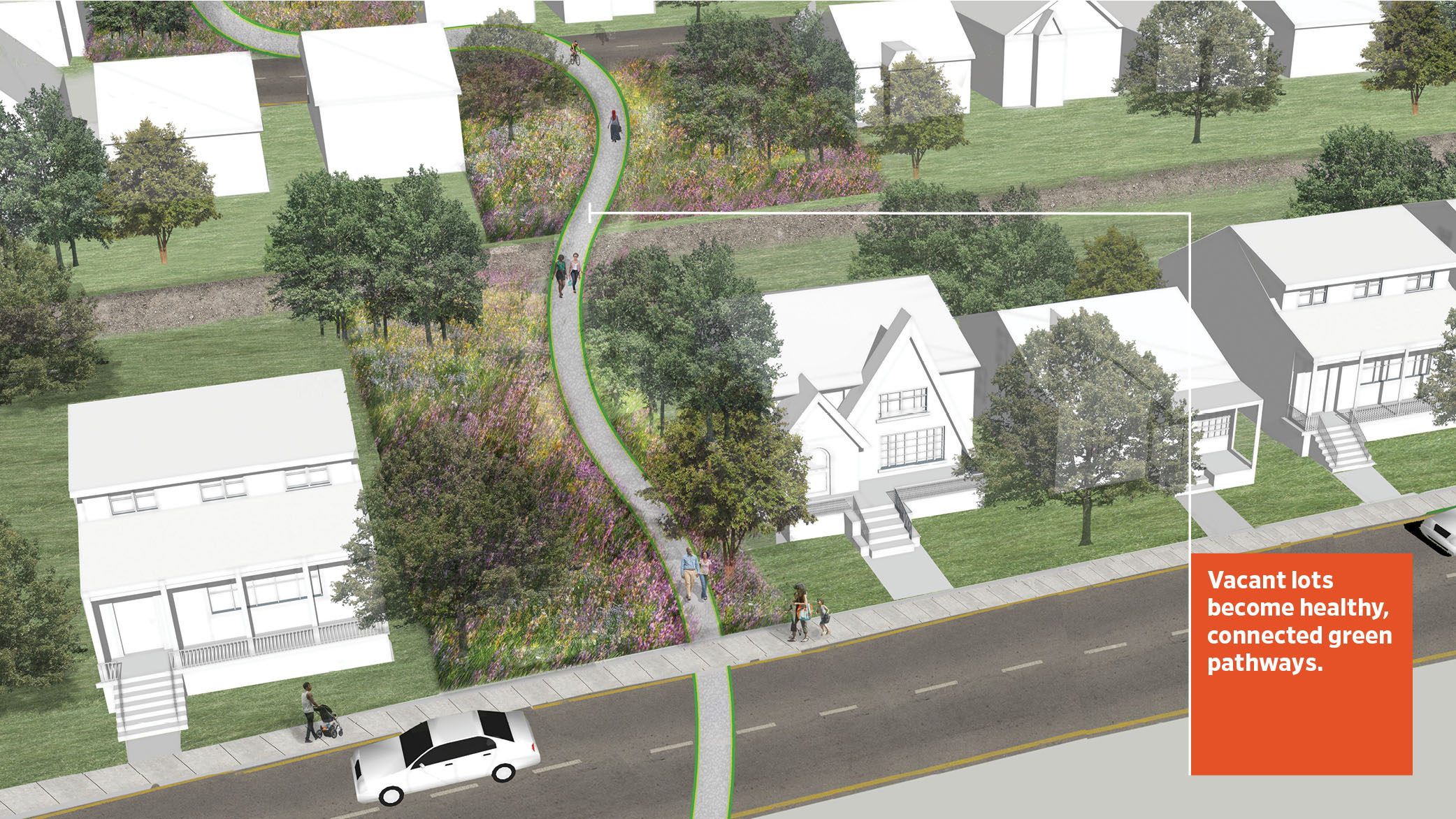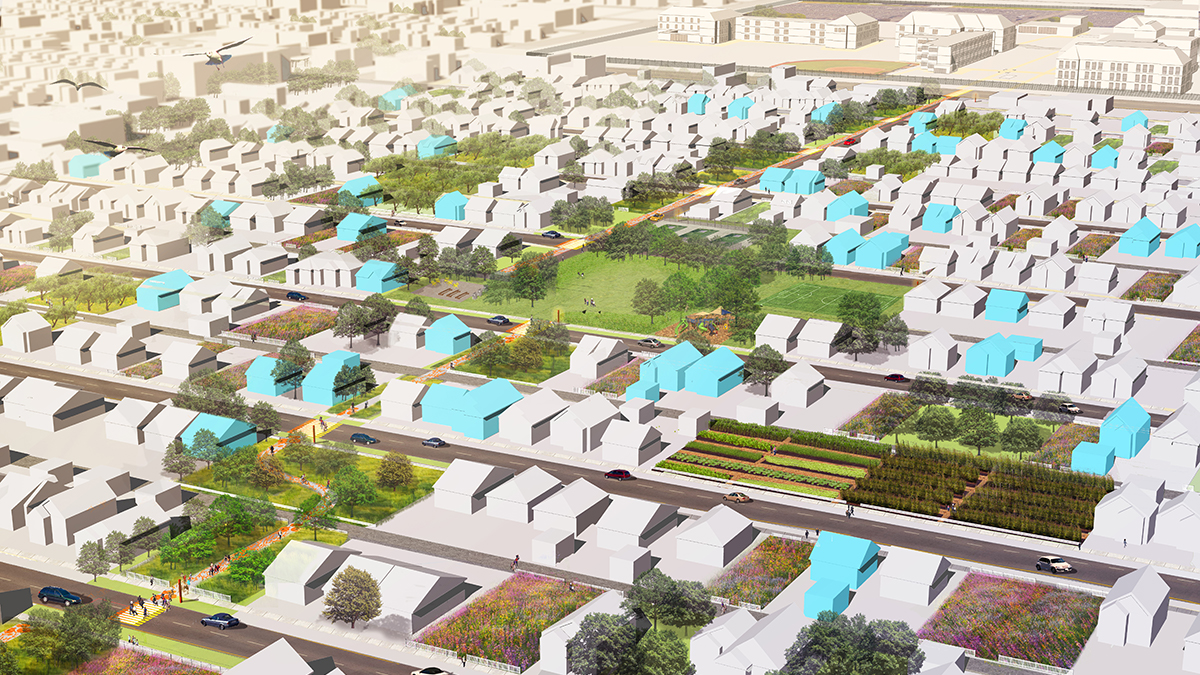
ASLA 2017 Professional Honor Award in Analysis and Planning, Fitzgerald Revitalization Project, Spackman Mossop Michaels.
Over the past 50 years, Detroit lost more than a million residents. The Fitzgerald neighborhood was especially hard hit. By 2017, more than 300 parcels, or half of the entire neighborhood, stood vacant. Disinvestment and neglect left the neighborhood blighted, unhealthy, unsafe, and lacking in green space. Furthermore, pedestrian circulation in the neighborhood was compromised because of the street layout, lack of pedestrian routes, and the high speed of traffic. Working with the City of Detroit and other public and private entities, Spackman Mossop Michaels designed a plan for a new greenway and park created out of consolidated vacant parcels. Two hundred other vacant lots will be turned into community hubs, orchards, pollinator habitats, and natural stormwater management systems. Currently in progress, the Fitzgerald Revitalization Plan improves community health through restorative green spaces, increases the affordable housing stock, and safely connects residents to nearby colleges—undoing decades of environmental injustice and creating new opportunities.
Background:
The Fitzgerald Revitalization Plan envisions a new way to help distressed neighborhoods: focus on the landscape of the entire neighborhood rather than blighted properties on a lot-by-lot basis. The project considers all vacant and blighted properties in the entire one-quarter-square-mile neighborhood, envisioning an entirely blight-free community.
Healthy landscapes became the framework that holds together all the other initiatives in the neighborhood—affordable housing, crime reduction, improved health outcomes, and workforce development, among others. The vision of a healthy, walkable, vibrant neighborhood with access to parks, greenways, and community spaces is the idea around which the other initiatives revolve.
An extensive community engagement process is at the heart of this project. Early on, the City of Detroit committed to a transparent process where the neighborhood is involved in every step of the project. Beyond the community and stakeholder meetings that formed the basis of the engagement process, the community was involved in the selection of the community development team that will implement a large portion of the plan. The planning process also addressed multiple issues simultaneously, such as landscape strategies, workforce development, crime reduction, and affordable housing, in an acknowledgment of their interconnectedness.
The Fitzgerald Revitalization Plan will build resilience into the landscape by increasing the coverage and quality of the urban tree canopy, creating pollinator habitats with native meadows, and naturally managing stormwater. A clear and consistent goal of the community is to restore the landscapes and bring back lush, vibrant landscapes.
- Fitzgerald Revitalization Project, 2017 ASLA Professional Awards
- Fitzgerald Neighborhood Revitalization Plan, Spackman Moss Michaels
- Fitzgerald Revitalization Project Updates
- Fitzgerald revitalization to include 115 rehabbed homes, new park, green space, Curbed Detroit, 2017
- Housing revitalization in Fitzgerald neighborhood moves forward, Curbed Detroit, 2018
- Proactively address equitable access to transportation options, affordable housing, jobs, and recreation and open space.
- Stress equity and connectivity in transportation planning, including equitable access to rail, transit, and dedicated bicycle commuting options.
- Plan “gray” stormwater infrastructure, i.e., engineered systems, thoughtfully and sustainably in concert with natural green infrastructure systems.
- Select biohabitat-supporting and pollinator-friendly native or adapted plant species appropriate to the site/region and changing climate conditions.

ASLA 2017 Professional Honor Award in Analysis and Planning, Fitzgerald Revitalization Project, Spackman Mossop Michaels.